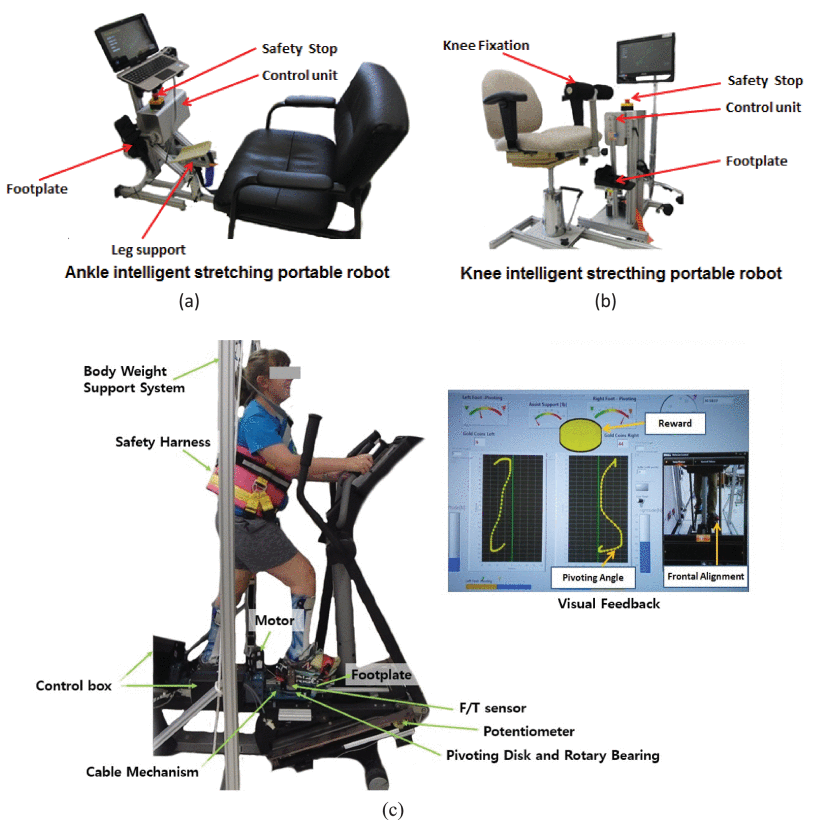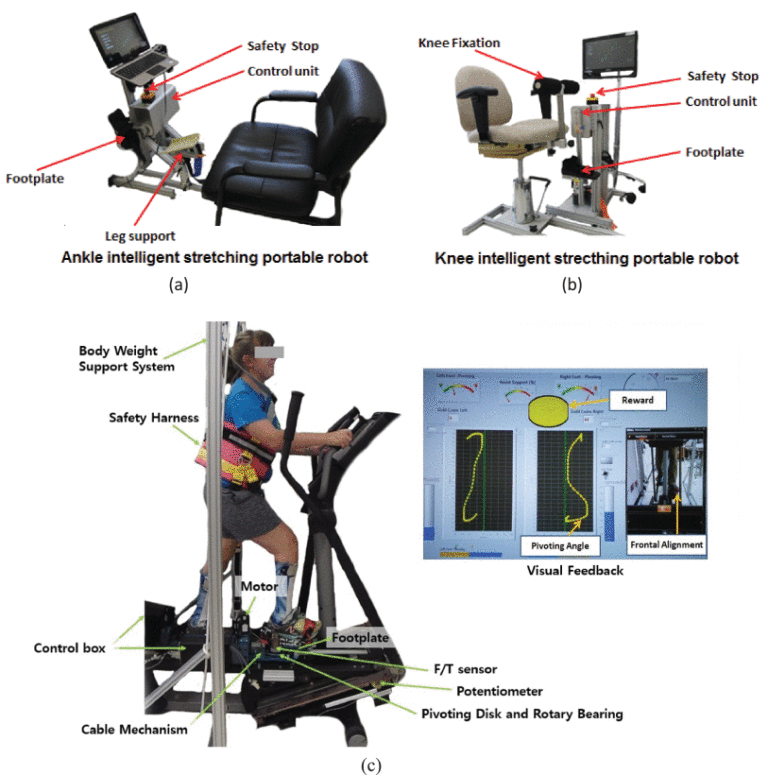
Although various treatment methods have been investigated to reduce spasticity and intoeing gait in children with cerebral palsy (CP), methods to concurrently reduce an intoeing gait and associated ankle/knee stiffness and spasticity according to a child’s specific needs are lacking. This study aimed to develop a training program to improve walking function and transverse-plane (pivoting) neuromuscular control and reduce spasticity and intoeing gait deviations. Eight children with diplegic CP and intoeing gait participated in this 6-week combined robotic ankle and/or knee intelligent stretching and pivoting neuromuscular control training program (Subject-specific Stretching and Pivoting Off-axis Neuromuscular control Training, [SS-POINT]). The effects of SS-POINT were evaluated using neuromechanical, functional, and clinical outcome measures and compared to those for eight children with CP and intoeing gait who participated in pivoting neuromuscular control training (POINT) alone in a previous study. Results: After the SS-POINT program, subjects with CP showed reduced knee stiffness and intoeing angle, and improvements in both joint and leg functions in terms of ankle and knee active range of motion, ankle dorsiflexor strength, proprioception, walking speed, balance, and minimum pivoting angle. Furthermore, improvements in proprioceptive acuity and minimum pivoting angle after the SS-POINT were greater than those after the POINT. Conclusion: The SS-POINT approach can be used as a subject-specific training program for improving leg and walking functions and reducing intoeing during gait. Significance: This approach can serve as an individualized intervention at the joint and walking levels to maximize intervention effects by adjusting training targets, sequences, and intensities to meet the individual needs of children with CP.

